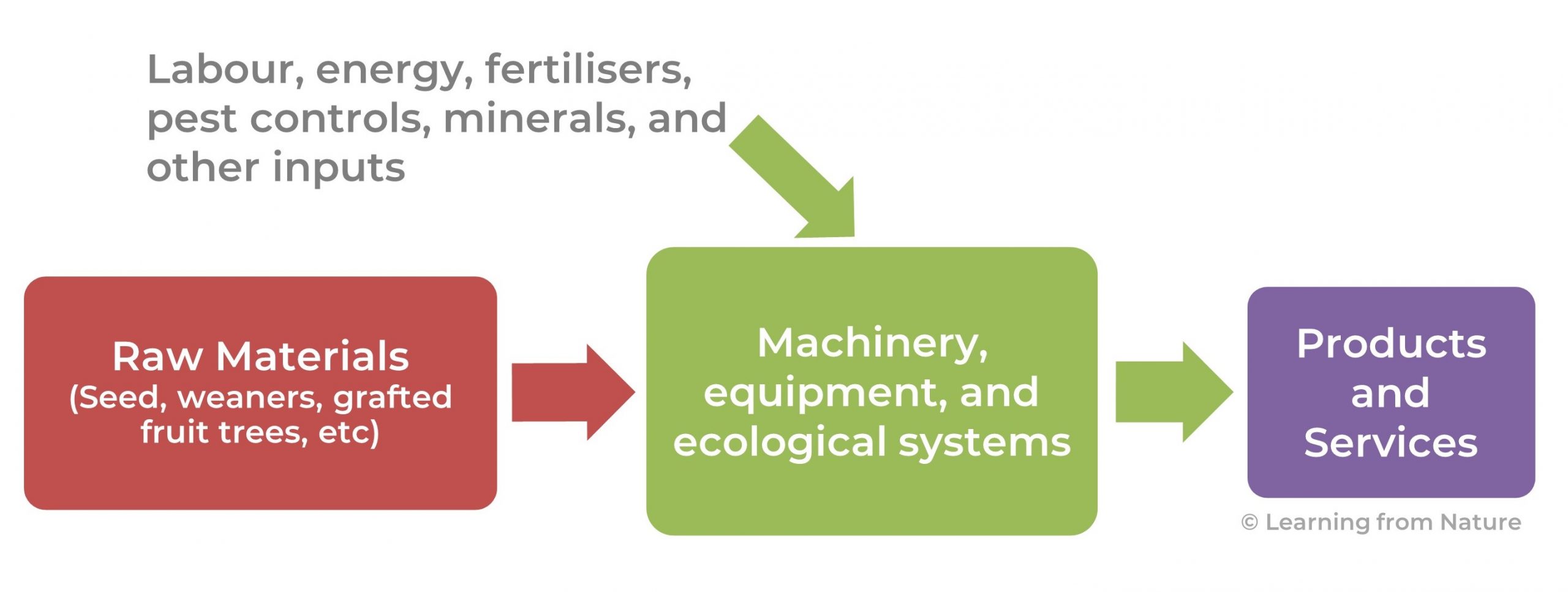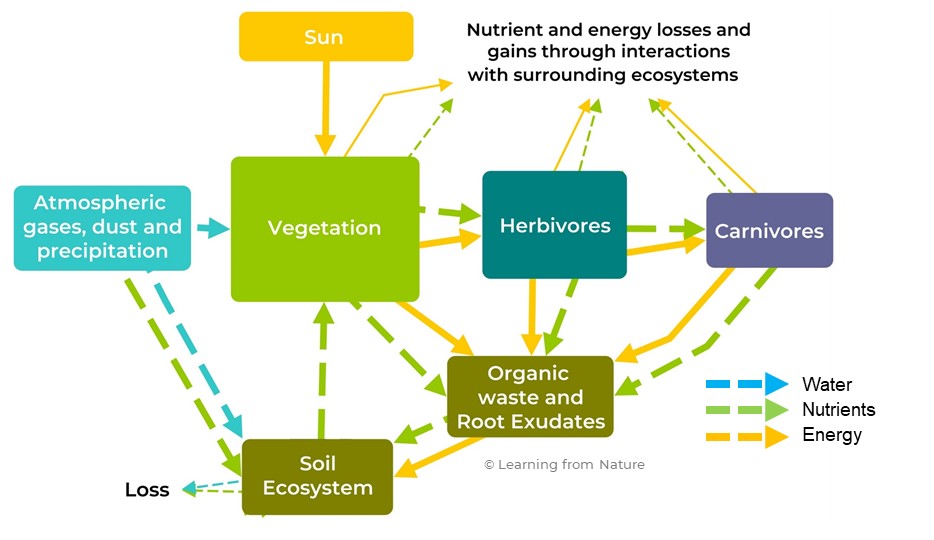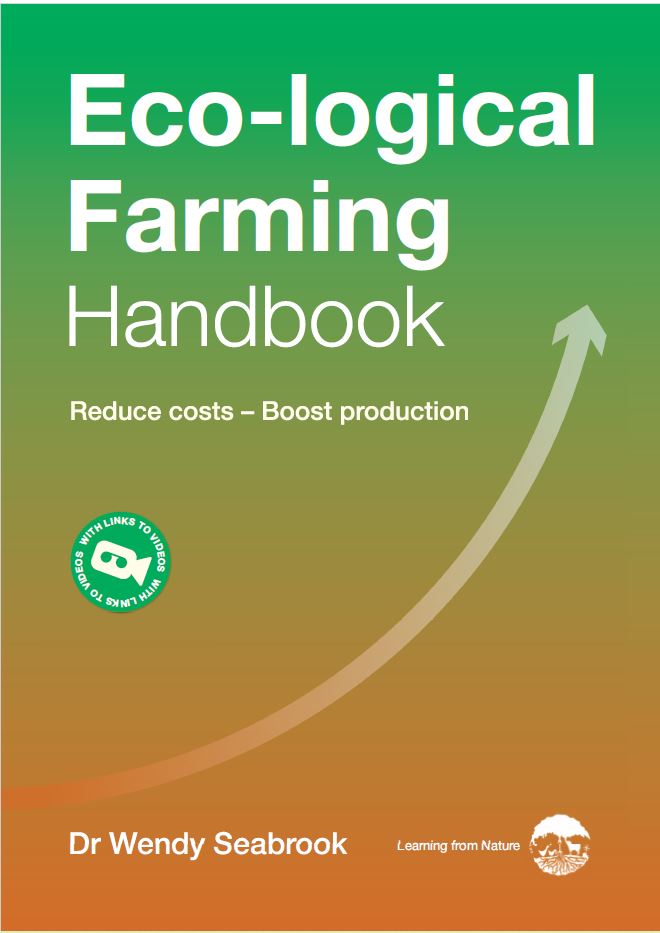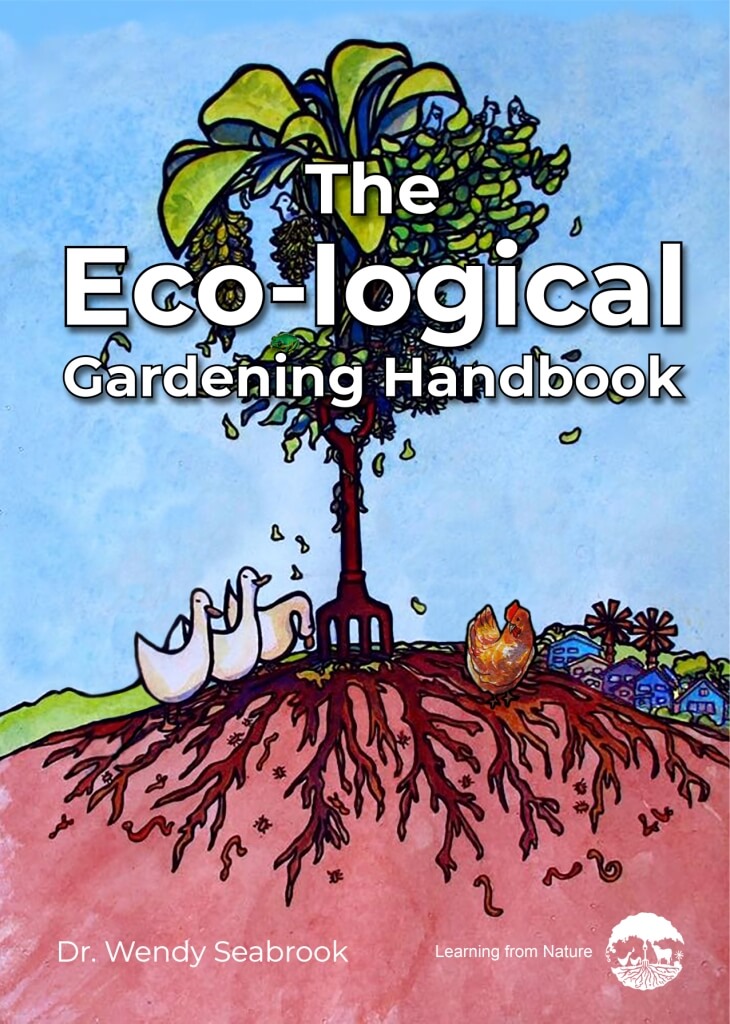Many of us are switching to regenerative practices in our farms and gardens, having realised that the land we’ve managed ‘sustainably’ can give us more support with growing food by improving our soil and other growing conditions. But are we regenerating the right things, and how do we choose regenerative practices that work?
Low levels of organic matter, nutrient deficiencies, rainwater running off rather than infiltrating our soil, crops relentlessly hammered by insects, and unpollinated flowers indicate that our growing conditions aren’t 100%. We can focus on improving each of these. But this doesn’t make much sense because they are the symptoms rather than the cause of our poor growing conditions.
By repairing the ecosystems within our vegetable gardens, orchards and fields, we solve our issues with growing food and benefit from the FREE ecological services functioning ecosystems provide. It’s how we design food production systems that are agroecological!
The production systems we use to grow food are no different, in principle, from those that manufacture chocolate biscuits and big-screen TVs! We use our garden power tools, farm machinery, and labour to convert raw materials into food.
The production systems we use to grow food are no different, in principle, from those that manufacture chocolate biscuits and big-screen TVs! We use our garden power tools, farm machinery, and labour to convert raw materials into food. The only difference is that they require ecological systems – nutrient and water cycles and solar energy capture through photosynthesis – to work.

Consequences of Growing Food in Poorly Functioning Ecosystems
Like any production system with poorly maintained parts, we experience loss of production, product quality issues, and higher operating costs. We cultivate the soil and apply pest controls, fertilisers, and other external inputs to replace the services our ecosystems would otherwise provide. Virtually everybody does it! It has become the norm whether we use chemical or organic inputs.
Like any production system with poorly maintained parts, our ability to produce food becomes more precarious when our production systems are under extra strain. We see this through our vulnerability to droughts, flooding rains, extreme heat, and unusual pest and disease outbreaks.
Imagine for a moment that you manufacture chocolate-covered biscuits! You’ve got the production line all setup, but the biscuits come out with holes in the chocolate coating! What do you do? Set them aside and get another machine to finish the coating. Or sort out the root cause of the problem by repairing your production system?
Now, imagine your soil tests show that you have inadequate organic matter levels. What do you do? Get out your tractor or wheelbarrow and spread compost and mulch. Adding these organic materials helps. But what’s more logical, making regular applications or tackling the root cause of the problem by repairing the ecological systems producing the organic matter? Relying on regular applications of compost and mulch is no different from depending on an extra chocolate coating machine! It’s not efficient, nor is it ecological!
Repairing our Ecosystems isn’t Complicated
Ecosystems are complex, but repairing them isn’t complicated. Ecosystems basically form partially closed systems in which animals, plants, microbes, and other living organisms and their environment are interdependent and regularly interact.

Three functions drive most of the action: nutrient cycles, water cycles and energy flows (see diagram below). Even if we focus on repairing one of these, we typically improve the others because they are interconnected. In comparison, treating the symptoms of poorly functioning ecosystems has been a logistical nightmare!
I spent years trying to fix all the problems identified in my soil tests – calcium magnesium ratios out of whack, low pH, phosphate, and organic matter. Depending on the season, my soil was waterlogged, gooey, or set like concrete. It proved more straightforward to give the experts—my soil organisms—the resources to repair the ecosystem, take the lead in the decision-making, and thereby fix my issues!
Repairing our ecosystems, we tackle the root causes for virtually all of the natural resource issues holding us back. We improve organic matter, soil structure, nutrient availability, water infiltration and storage in our soil, pollination of our crops, protection from pests and diseases and most of the other problems we have with our growing conditions. We produce nutritious food, save money on fertilisers and other inputs, relying instead on Nature’s free ecological services, and get more reliable yields – especially when the weather turns bad.
Furthermore, we enable our ecosystems to supply many other goods and services as natural by-products, such as biodiversity, carbon sequestration, flood mitigation, and improved water quality.
How to Choose Regenerative Practices
Now that we understand what to regenerate, we need effective practices for our climate, other growing conditions and production systems. We can employ standard regenerative practices like cover cropping, Holistic Planned Grazing, Natural Sequence Farming, Syntrophic Farming, alley cropping, Silvopasture and other agroforestry designs. But, by understanding how to repair our ecosystems above and below ground, our focus becomes “am I using the best methods to solve my problems effectively?” rather than “am I using the methodology correctly?” Standard practices become the source and inspiration for ideas rather than one-size-fits-all recipes to follow. We gain the skills to develop effective solutions for our unique circumstances applying ecological principles, and gain the know-how to respond constructively to emerging issues and threats.
Here’s an example demonstrating why this approach makes sense. In temperate and other high-latitude climates, the standard Conservation Agriculture practices, diverse cover crops and crop rotations, and zero-till and livestock integration improve the soil. However, this recipe doesn’t work well in warmer and wetter climates. In the Philippines, where they are using Conservation Agriculture, the response has been to add another practice and rename the program – “Conservation Agriculture with Trees!”
By repairing the ecosystems in our veggie gardens, orchards and fields, improving our growing conditions becomes remarkably straightforward because what we do is inherently eco-logical. We reduce our reliance on external inputs, reducing our costs and environmental footprint beyond our farm or garden gate! The result is a ‘cascade of wins’.
Learn More
See how we apply these ecological principles to regenerate our farm here
Get our Eco-logical Farming or Gardening Handbook –
Featured image Edgar on UnSplash


